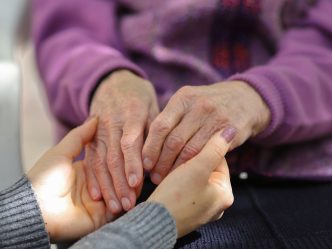No type of cancer affects more people than skin cancer — one in five Americans will develop it by the time they’re 70, according to the Skin Cancer Foundation.
The silver lining is that skin cancer is almost always curable if it’s found early. That’s why it’s important to know the early signs of skin cancer so you can seek timely medical attention if you spot a suspicious mole.
3 Types of Skin Cancer
First things first — not all skin cancers are the same. There are three main types of skin cancer, including basal cell carcinoma (BCC), squamous cell carcinoma (SCC) and melanoma.
BCC and SCC are the most common and second-most-common types of skin cancer, respectively. Melanoma is rarer but more serious — it causes the majority of deaths from skin cancer despite accounting for about 1% of total cases, the American Cancer Society reports.
“Melanoma has a tendency to spread to other organs much more efficiently than BCC or SCC,” said Germame Ajebo, MD, medical oncologist and hematologist at the Georgia Cancer Center and clinical assistant professor at Augusta University. “Typically, melanomas develop in the epidermis, the top layer of skin, and grow horizontally for many years. Most of these cancers are curable by surgical removal while they’re in this horizontal phase. Sometimes, however, melanomas start growing vertically and penetrate the lower layer of skin. These cancers may then spread elsewhere in the body. That makes melanoma harder to treat.”
Early Signs of Skin Cancer: What to Watch For
Don’t let skin cancer hide in plain sight. Check your skin each month for early signs of skin cancer, including:
- BCC — an open sore that doesn’t heal, a red, white or pink bump, or an itchy or crusty patch of skin
- SCC — a red or wart-like bump, a scaly patch of skin, or a recurring sore
- Melanoma
The first five letters of the alphabet can help you spot melanoma. Here’s how:
- “A” is for asymmetry. Do the two halves of a mole look different?
- “B” is for border. Does the mole have irregular edges?
- “C” is for color. Does the mole contain abnormal colors, such as blue, black, gray, red or white?
- “D” is for diameter. Is the mole about the size of or larger than a pencil eraser?
- “E” is for evolving. Has the mole gotten bigger or changed color or shape over time?





